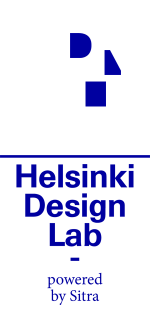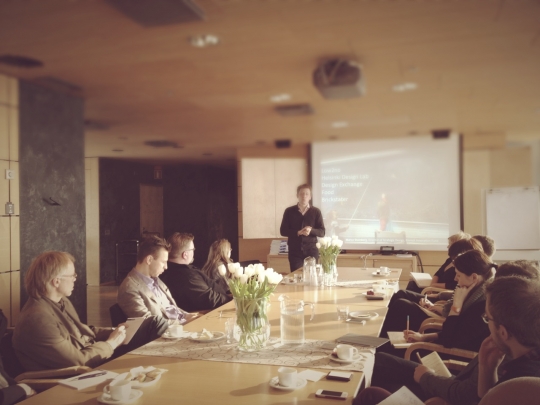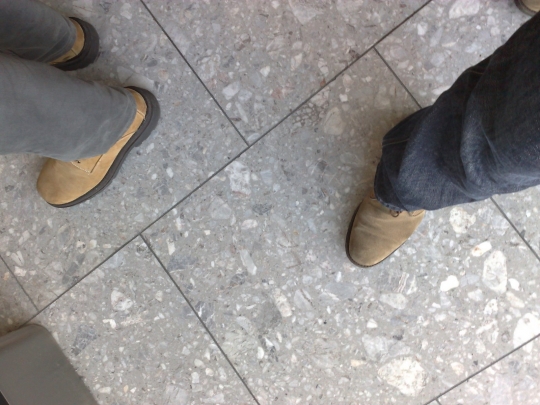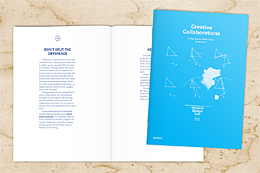All posts tagged ROI
Marco declares, "winter is officially over." Mind you, this does not mean that spring has sprung, but we are expecting a week of consistently positive temperatures. Small steps.

Last week this pile was snow. By the end of this week it will be slush. Yuck.
A solid heads-down week here on the home front with no travel and no major events. Just a lot of good conversations in between dispatching work across the slate of ongoing projects.
Dan and I were working on internal stuff including Sitra's portfolio management, language habits, systems, and spaces. This sounds like a lot because it is a lot. The organization has committed itself to what amounts to a rather significant transition in a short span of time and many of us across Sitra are contributing to various parts of this.
Coordination is not an issue so much as continuity. When working in different teams with disjointed schedules and at least two languages in the mix, keeping continuity through the work—and through its full duration—is the challenge.
Although we have a good store of experience in house, bits and pieces of this specific transition make it unique, something that none of us know immediately how to handle. I might even say that having to make it up as we go along has been a positive experience. As it often is!
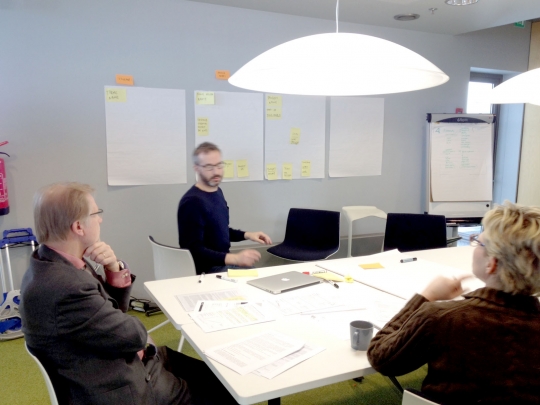
Tuula, Jukka, and Dan hashing out the hockey cards. More on this when it's ripe for sharing.
Here in Helsinki one of the local issues is a proposal by the City that the Guggenheim be invited to build a franchise in town, at the expense of the tax payers. It's an odd proposal that has been handled in a less than open manner. A recent article in Domus has done a good job of unpicking some of the issues.
Speaking of unpicking, Rosanne Haggerty, a friend of HDL, and her organization Common Ground were profiled in recently in the Wall Street Journal Magazine. If you're not familiar with the work that Common Ground does with the homeless communities in NYC and elsewhere in the US, this article is a great introduction. You might guess from this quotation why we appreciate Rosanne's unique approach to ending homelessness: "All our problems are interconnected. Nothing’s tidy." Well put.
We ended the week by hosting a visit from the Finnish Design Management Association (FDMA), Finnish Design Business Association, and some Aalto University researchers. The latter two shared a bit of their research into the ROI of design. At the core, this effort is a tried and true way to scrape together a bit of evidence that assists designers, consultants, and managers gain the respect of the business community who are still sometimes more used to thinking of design as window dressing. The work that FDMA are doing is a local study of the perceived return on investment of design for products and services.
As we are wont to do, the boundaries of the question expanded as the group discussed what purpose the evidence is intended to serve. In a simple way, evidence is really a shortcut to trust. If that's the case, numerical evidence becomes a token that some professional cultures use to build confidence and trust. Others (like most fields of design) respond better to narratives.
Part of the group felt strongly that solid numbers are a prerequisite for design to gain respect in the C-suite. The other half of the room, perhaps slightly provoked by my suggestion that made up figures may be just as effective, argued that playing the numbers game might be useful for getting in the door, but the conversation has to move beyond, to other forms of value that are harder to measure. In our own research and conversations over the years we've heard a consistent story: numbers might convince the person sitting on the other side of the table to listen to you for a few minutes, but until they see the design process in action deep trust will likely remain out of reach.
Regardless of how one packages evidence, tokens are only ever a pointer to something larger. A large enough body of facts and figures that can convince a hardened skeptic to invest in design is unlikely to come about any time soon, simply by virtue of the overwhelmingly asymmetric pile of evidence that supports business as usual. It's business as usual, after all, until one day we wake up and things have tipped.
Just as important as the evidence is the person delivering it and the relationship that they build with the people they are pitching to, both in the moment and over time. That's about pitching, patience, and persistence.
On topics of entrepreneurship I usually turn first to Paul Graham, whose website is an excellent resource. Here's what he has to say about evidence in the context of pitching to investors:
Probably the single biggest piece of evidence, initially, will be your own confidence in [what you're doing]. You have to show you're impressed with what you've made. And I mean show, not tell. Never say "we're passionate" or "our product is great." People just ignore that—or worse, write you off as bullshitters... What you must not do is seem nervous and apologetic. If you've truly made something good, you're doing investors a favor by telling them about it. If you don't genuinely believe that, perhaps you ought to change what your company is doing. If you don't believe your startup has such promise that you'd be doing them a favor by letting them invest, why are you investing your time in it?
One of the most useful things in my experience working in startups was getting rejected. It's crushing to be turned down after putting so much effort into a pitch, but every startup has to do it dozens or even hundreds of times before someone decides to make an investment. There's nothing like having one's livelihood on the line to inspire a bit of patience.
Implicitly what I am suggesting is that designers should be more comfortable with being rejected. It always feels good to win over a skeptic with a convincing proposal, but unless it's possible to build a relationship of mutual trust the collaboration will be dead on arrival. Those relationships might result in good design work, but are they likely to yield a knockout success story that ends with a repeat client?
By no means it is easy, but we're now starting to see the returns from our own slow and persistent approach to developing meaningful relationships with various parts of the government here in Finland. Despite Sitra being a public sector organization, and already on the inside in that sense, we still had to do significant legwork to develop the right pitch, delivered to the right people, at the right moment(s). The Design Exchange Programme is one return on these efforts.
In recent years it has been remarkable to see the startup community build an open dialog around the many issues involved in establishing a technology business. The Aalto Entrepreneurship Society here in Finland is just one example. It strikes me that they understand something which often still eludes the design community: designers can be cagey about discussing ways-of-working, as if confusing the how with the what. The thing that our clients—public or private—care about most is what difference our work makes in the world. How it happens is up to us, the design community, and the more of us sharing the tricks of the trade the better off everyone will be. That's why I found our conversation on Friday so encouraging.
Good luck to FDMA, thanks for coming by, and we'll be sure to link to the results of the study here when they're available.
So it is and so it goes.
Today I spent time with the research team at the Helen Hamlyn Centre in London. Stunning work looking at applying design to bring innovation in healthcare (one of many areas of focus): Maya gave us an overview of their low cost disposable surgical tools; Johnny talked about their resus-station; Sally showed the graphic design of injectable medicines; Rob walked me through their Smartpods. All stellar work, well worth a study!
While the tangible outputs of their work were great design solutions, the real jewel is the process. Much of our discussion focused on an innovation cycle that does not stop at concepts, but pushes it beyond to implementation. When we talk about healthcare getting all the right stakeholders, identifying key champions, finding the right funding (money, after all, does not come without strings attached!), framing the problem productively, keeping focus, having the right stewardship…. well, it’s not easy. And it does not happen overnight. But this is a design process that enables the design solution to shine.
The great challenge today is not so much great ideas, but implementing great ideas. In an age where risk is a risky proposition, being able to demonstrate that a new way of framing problems (through design) leads to better solutions is critical. But without an innovation process that spans the continuum of inception to implementation it’s hard to make the ROI argument…. because there is no return!
